Discover 8 hidden attractions, cool sights, and unusual things to do in Dougga (Tunisia). Don't miss out on these must-see attractions: Libyco-Punic Mausoleum of Dougga, Temple of Juno Caelestis, and Aïn Doura Baths. Also, be sure to include Victoria Church in your itinerary.
Below, you can find the list of the most amazing places you should visit in Dougga (Béja).
Table of Contents
Libyco-Punic Mausoleum of Dougga
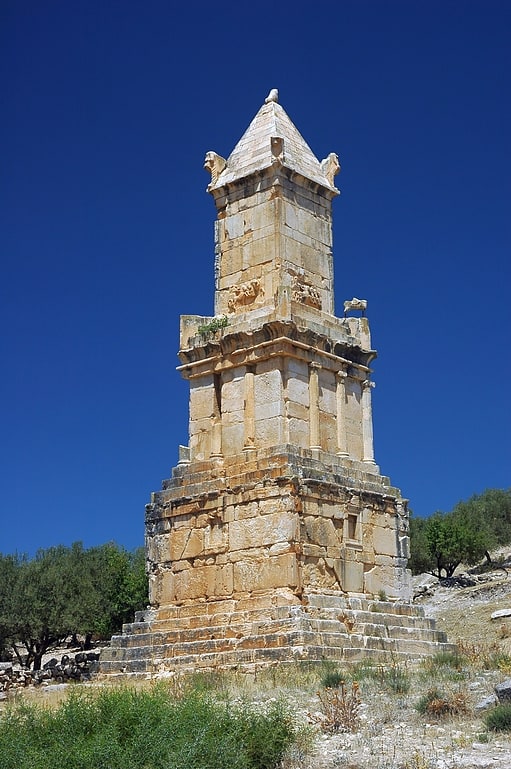
Also known as: الضريح اللوبي البوني
The Libyco-Punic Mausoleum of Dougga is an ancient mausoleum located in Dougga, Tunisia. It is one of three examples of the royal architecture of Numidia, which is in a good state of preservation and dates to the 2nd century BC. It was restored by the government of French Tunisia between 1908-10.
As part of the site of Dougga, the mausoleum is listed by UNESCO as a World Heritage Site. On 17 January 2012, the Tunisian government proposed it be included in a future classification of the royal mausoleums of Numidia and Mauretania and other pre-Islamic funerary monuments.[1]
Temple of Juno Caelestis
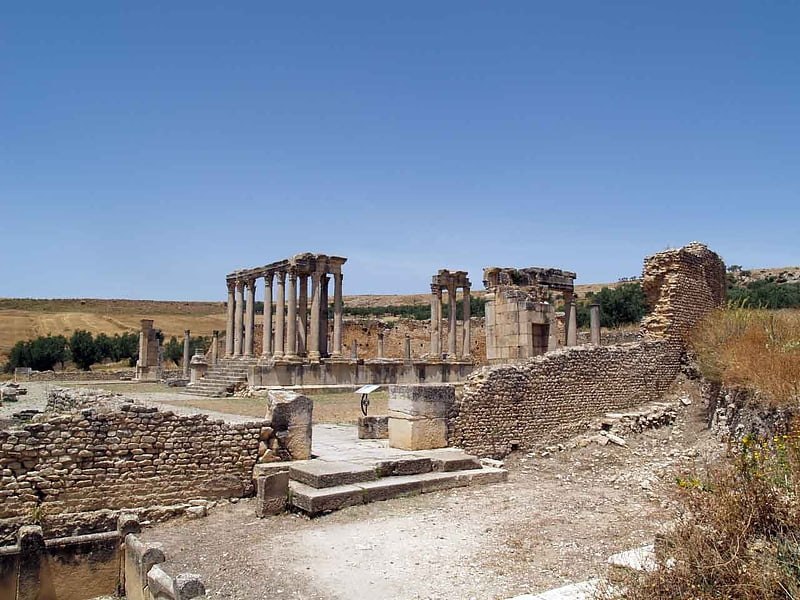
Historical landmark in Tunisia. The Temple of Juno Caelestis is a archaeological site in Dougga, Tunisia. The ruined temple was dedicated to the Roman goddess Juno, herself an evolution of the Punic goddess Tanit. The temple was built between 222 and 235 AD, and is one of the best preserved temples dedicated to Juno in Africa.[2]
Aïn Doura Baths

The Aïn Doura Baths are a series of Roman-era ruins located in Dougga, Tunisia. The site contains ruins from a Roman bath dating to the 4th century, and is considered an important archaeological heritage site by the National Heritage Institute of Tunisia.[3]
Victoria Church
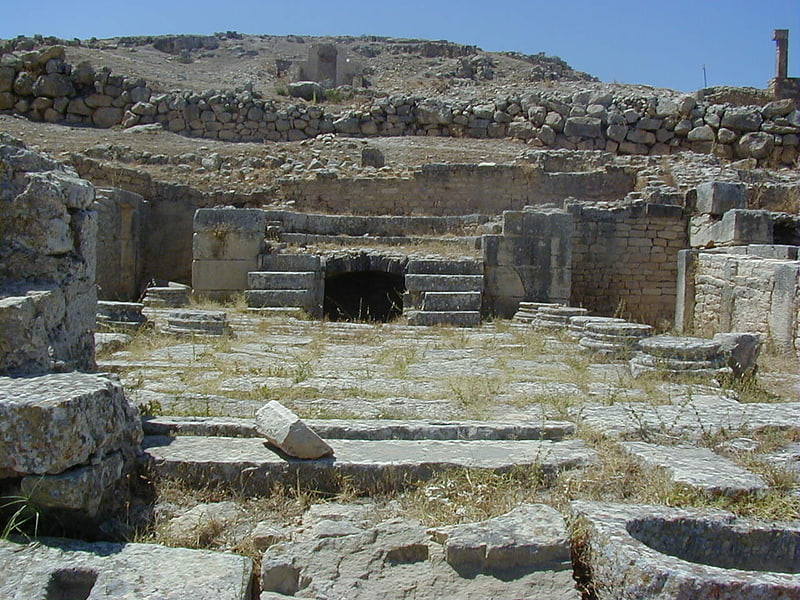
Historical landmark in Tunisia. Victoria Church is an old Roman church located in the city of Beja. It represents the unique Christian monument that has been so far excavated at Dougga.[4]
Arch of Alexander Severus

Also known as: قوس سيفار الكسندر
The Arch of Alexander Severus is a Roman triumphal arch in the ancient civitas of Thugga, located in Dougga, Béja, Tunisia. It was dedicated to the Roman Emperor Alexander Severus.
The arch was built in 228, in gratitude to the emperor for his beneficence towards the city. It functioned as one of the city gates, at the end of a road linking to the road between Carthage and Tébessa.
The preserved arch is the span of a single vault, about 4 metres wide, and lateral pylons with niches, which would have been framed by detached columns on tall plinths which are now lost (fluted pilasters remain at the rear). Only a single minor trace of the entablature remains, immediately above the blocks of the archway.
The arch together with the other monuments of the archaeological site of Dougga, was included in the list of World Heritage Sites by UNESCO in 1997.[5]
Licinian Baths
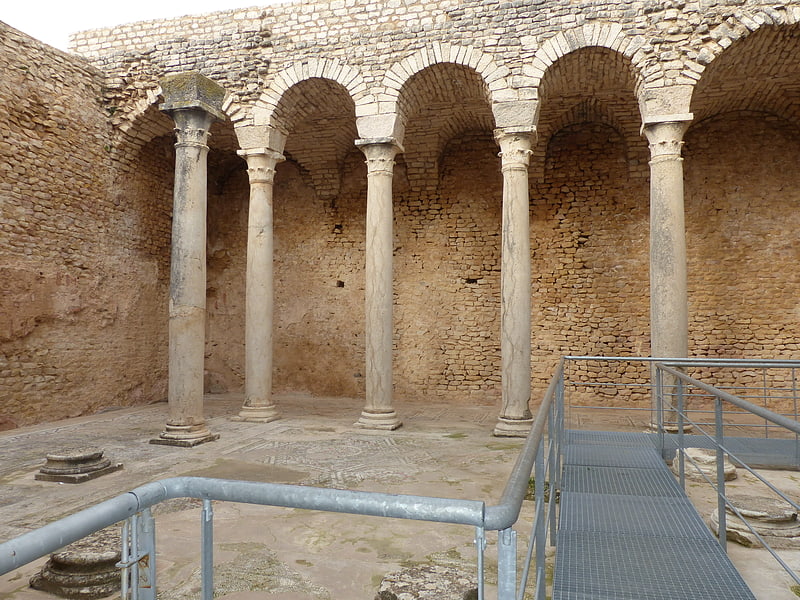
Historical landmark in Tunisia. The Licinian Baths are a classified monument in the city of Beja in the north-west of Tunisia. Located in the ruins of the ancient settlement of Dougga, they represent one of the most important thermal establishments in Roman Africa.[6]
Tourism in Tunisia
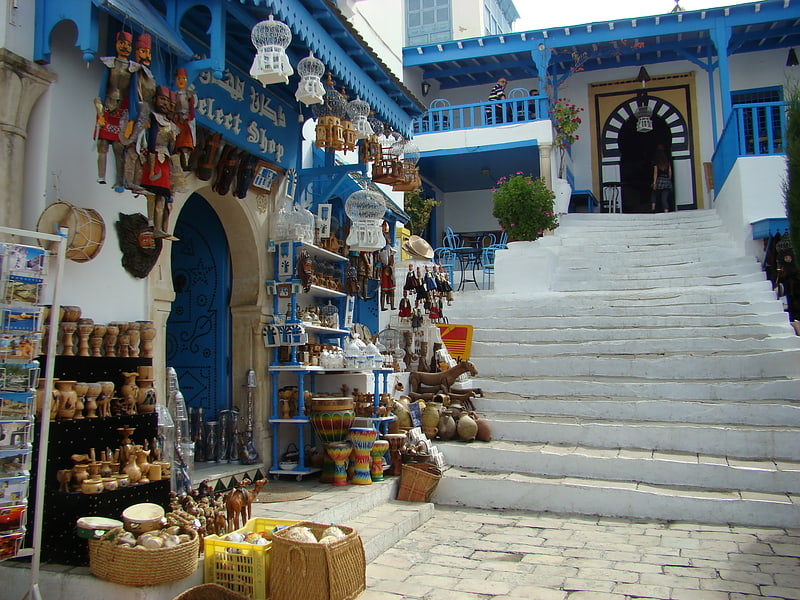
Tourism in Tunisia is an industry that generates around 19.4 million arrivals per year in 2016, 2017, 2018, 2019 & 2020, which makes it one of the most visited countries in Africa. Tunisia has been an attractive destination for tourists since the beginning of the 1960s. Among Tunisia's tourist attractions are its cosmopolitan capital city of Tunis, the ancient ruins of Carthage, the Muslim and Jewish quarters of Djerba, and coastal resorts outside Monastir. According to The New York Times, Tunisia is "known for its golden beaches, sunny weather and affordable luxuries."[7]
Musti
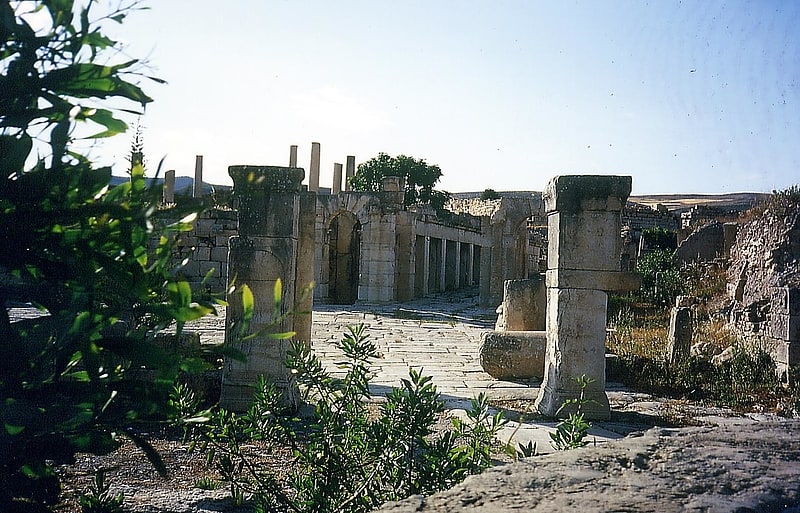
Also known as: موستي
Musti or Mustis was an ancient city and bishopric in the Roman province of Proconsular Africa, now in northern Tunisia. Its ruins, called Mest Henshir, are about eight miles from Dougga, near Sidi-Abd-Er-Rebbou. It is also a Catholic titular see.[8]